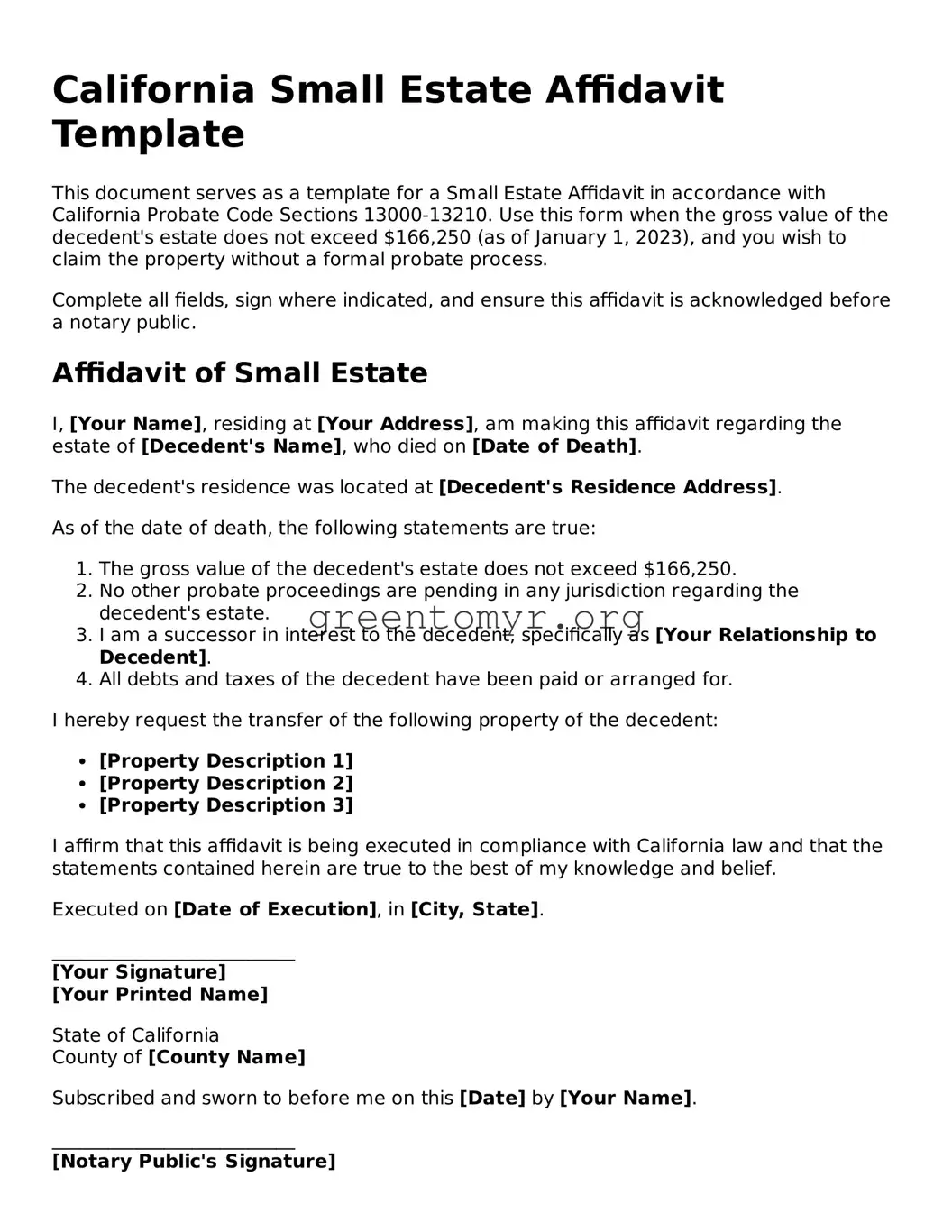California Small Estate Affidavit Template
This document serves as a template for a Small Estate Affidavit in accordance with California Probate Code Sections 13000-13210. Use this form when the gross value of the decedent's estate does not exceed $166,250 (as of January 1, 2023), and you wish to claim the property without a formal probate process.
Complete all fields, sign where indicated, and ensure this affidavit is acknowledged before a notary public.
Affidavit of Small Estate
I, [Your Name], residing at [Your Address], am making this affidavit regarding the estate of [Decedent's Name], who died on [Date of Death].
The decedent's residence was located at [Decedent's Residence Address].
As of the date of death, the following statements are true:
- The gross value of the decedent's estate does not exceed $166,250.
- No other probate proceedings are pending in any jurisdiction regarding the decedent's estate.
- I am a successor in interest to the decedent, specifically as [Your Relationship to Decedent].
- All debts and taxes of the decedent have been paid or arranged for.
I hereby request the transfer of the following property of the decedent:
- [Property Description 1]
- [Property Description 2]
- [Property Description 3]
I affirm that this affidavit is being executed in compliance with California law and that the statements contained herein are true to the best of my knowledge and belief.
Executed on [Date of Execution], in [City, State].
__________________________
[Your Signature]
[Your Printed Name]
State of California
County of [County Name]
Subscribed and sworn to before me on this [Date] by [Your Name].
__________________________
[Notary Public's Signature]
Notary Public in and for said State.
